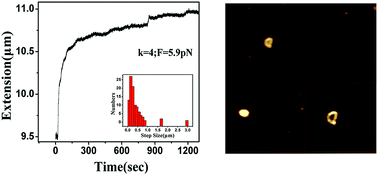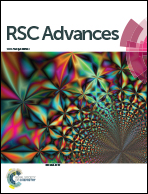Single molecular analysis of the interaction between DNA and chitosan
Abstract
Chitosan is a widely used potential agent for gene therapy, however its condensing process of DNA is not yet fully understood. In this paper, the process is studied by atomic force microscopy (AFM) and single molecular magnetic tweezers (MT), providing direct dynamic insights into the formation of DNA–condensate complex. The results indicate that the polymer architecture is strongly dependent on the charge ratio of chitosan to DNA (k), and pH value of the solution. The images of AFM show that the morphology of DNA changes from loose structures to compact ones when the charge ratio increases from 0.2 to 5. When the charge ratio is 4 and the pH changes from 7.4 to 8.5, the unraveling of the DNA–chitosan can be clearly observed. The compaction and unraveling of the DNA–chitosan complex are also analyzed at the single-molecule level using MT. The condensation and decondensation process has a stepwise and continuous stage. The stepwise jumps in the curve may essentially reflect the step-by-step formation of orderly toroids structures. The continuous compaction process may reflect of formation of orderly sphere and rod structures. The pulling curves contain a wide range of step sizes, ranging from tens of nanometers to a few micrometers. This may reflect other intermediate states. It is found that when the charge ratio increases from 2 to 7, the corresponding condensing forces have a linear growth of 0.5 to 4 pN, and the condensing and releasing processes are reversible. Therefore, the dominant factors in DNA condensation induced by chitosan are charge neutralization and the ion correlation effect.


 Please wait while we load your content...
Please wait while we load your content...